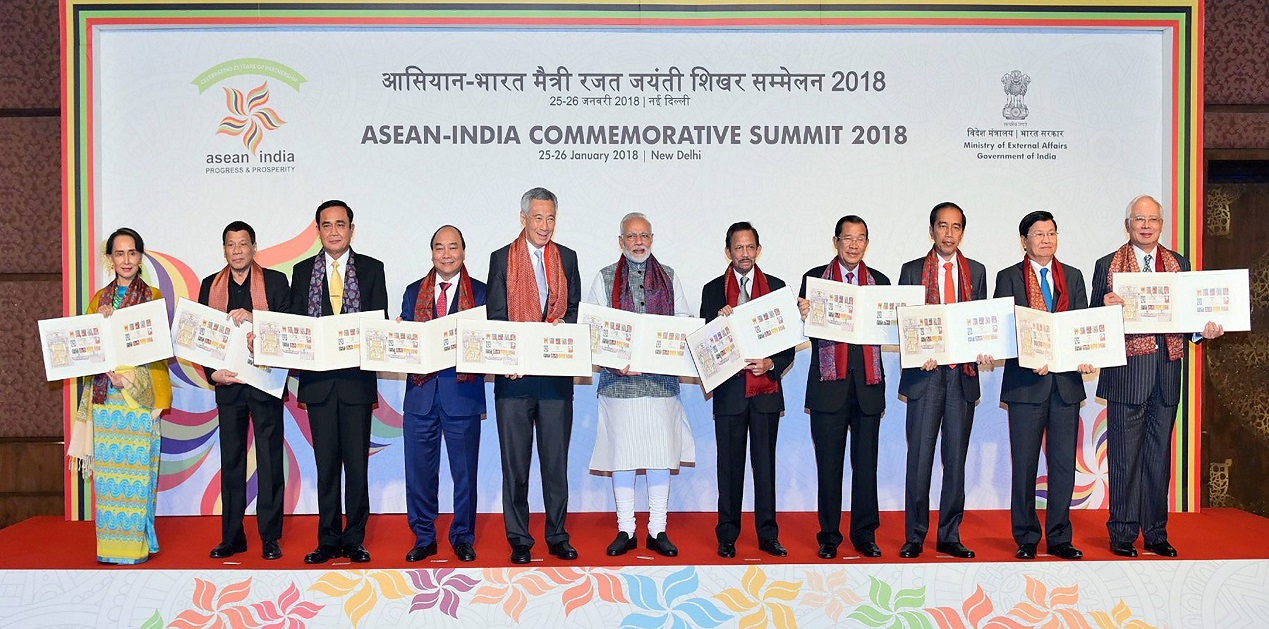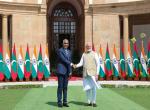Maritime security has been one of the important elements in the relationship between India and ASEAN countries. Right from the start of the Look East policy India has been concerned with regard to developing maritime security architecture with the Southeast Asian countries. With this objective in mind India has always aspired to bring together the stakeholders in the larger Asian security architecture. Under this initiative India has tried to reach out to ASEAN countries for developing capacities and capabilities through training and assistance in terms of search and rescue. The 2004 Tsunami was one such natural calamity which brought to the fore the vulnerabilities of Southeast Asian countries.
India being one of the prominent powers in the Indian Ocean region has tried to engage Southeast Asian nations particularly Malaysia, Singapore, Thailand and Indonesia under the rubric of Indian Ocean Naval symposium (IONS) which started in the year 2008, and is seen as one of the important engaging forms which integrate Indian Ocean with the Pacific Ocean. India’s engagement with the South Pacific countries as well as with Papua New Guinea and Timor Leste showcases expanding horizons of India’s Act East policy. Further, India has initiated training for the personnel of the countries such as Laos and Cambodia through regular training programmes while it has engaged Vietnam and Malaysia for training of their pilots and technicians. With Indonesia, apart from the coordinated patrols, India has been looking for reviving its redundant defence industries PT Pal and PT Dirgantara which are manufacturing military vehicles like armoured personnel carriers and developing ship platforms.
There has been some resonance with regard to development of ASEAN defence industry but because of financial issues and lack of ancillary industries which can support ASEAN defence industry network, the idea has not acquired a substantive shape. The ASEAN countries are importing a range of defence equipment and platforms from Russia and China. In many of the cases where the countries have been using Russian military equipment and platforms there has been engagement with India for training of sailors and technicians for maintaining platforms and developing necessary equipment for addressing minor problems.
Under the same ambit it has been seen that India wants to engage ASEAN countries at three different levels which include bilateral engagements, multilateral dialogues and liaison visits which would develop interoperability and promote regular interactions with the peripheral countries of Indian Ocean. Under this initiative India has defence agreement with nine countries out of 10 Southeast Asian countries. The defence agreements or the MoU in defence has been instrumental in facilitating high-level visits and exchange of personnel for training programmes. Invariably it has been found that countries such as Singapore, Vietnam, Indonesia, and Malaysia have developed better relations with India’s defence establishment. However, on the issue of India being the stakeholder in the Malacca Strait security initiative there has been reservations from Malaysia and Indonesia in the past. India being the ‘funnel state’ has always stated that it would act as a benign power for facilitating better security measures and protecting the sea lanes of communication for its own strategic interests.
Regular exercise is with Singapore and the stationing of Singapore aircraft at Kalaikunda airbase as well as defence equipment in Deolali and Babina has been seen as a reinforcement of better cooperation between the two countries. With Thailand and Indonesia there have been regular coordinated patrols along the Andaman Sea and is seen as a signal of thriving relationship with India. With countries such as Vietnam there have been regular defence interactions at the highest levels and there has been port calls by Indian ships to various ports of Vietnam. India has also stationed one of its senior naval personnel for the Regional Co-operation Agreement on Combating Piracy and Armed Robbery against Ships in Asia (RECAAP) programme in Singapore and has also established an Information Fusion Centre-Indian Ocean Region (IFC-IOR) at Gurugram where Singapore has also placed a Liaison Officer.
During the Republic Day parade of January 2018 the nine heads of state/government and one prominent leader attended parade. During this visit of important leaders of Southeast Asian Nations there had been also a dialogue which was organised related to maritime security and India buttressed its demand for engagement with South East Asian countries in protecting the maritime sea lanes of communication, cargo and unimpeded maritime commerce.
The issue of South China Sea has also hogged the limelight in the recent past and India has always stressed that it has new concerns with regard to safety and security in South China Sea. It has also supported free maritime trade and commerce, and reiterated that there should be resolution of the dispute through dialogue mechanisms only. Any use of force or threat of force has been strongly assailed by India and many other dialogue partners as well. Under the ASEAN Treaty of Amity and Cooperation (TAC) also the signatories have to shelve the threat of use of force or even verbal threats as such. Both China and USA have been signatories to the TAC but there have been major tensions which have cropped up in the past in South China Sea as well.
Maritime security has also been important issue for India and during August 2021 UNSC meeting India has organised a special dialogue session related to maritime security. During this meeting Prime Minister Modi has clearly articulated the fact that the countries should need to resolve their differences on maritime disputes through international arbitration or direct mechanisms. Representing the case of Southeast Asian countries, Vietnam has suggested that there should be an international attention to South China Sea and also the international organisation should commission the project in consultation with the regional countries to develop regional maritime security architecture. He also suggested that to dilute tensions there is a need for consensus and dialogue within the multilateral institutions.
For India maritime security is a critical from the point of view of its trade and commerce which goes through South China Sea to East Asian region and also for strategic purposes given the fact that India conducts exercises with countries such as Japan, Singapore, Vietnam and Philippines. India has been trying to galvanise opinion with regard to a permanent code of conduct in the South China Sea. The draft document in this regard has been under consideration for quite a while and therefore there is a need for concerted effort so that the draft becomes the accepted document among the various claimants to the South China Sea issue. India has been also conducting exercises with the other Quad countries closer to West Philippine Sea and Japanese waters. With regard to piracy efforts and also humanitarian assistance and disaster relief coordination among various littoral countries is critical in those waters. South China Sea is also one of the most thriving zones for fisheries and is the third largest fishing ground in the world. It is also crucial for the protein intake for the coastal communities and therefore a standard operating procedure and better management of the dispute would be critical for the Southeast Asian countries.
The resolution of the dispute can be done through three major ways. Firstly, it could be declared as a global common and the oil and gas exploration proceeds could be shared between the various claimant countries. Secondly, a unified market for the fisheries could be created which could help the coastal communities. Lastly, all the countries should accept the fact that any construction of concrete structure of the disputed islands should be stopped immediately and the status quo should be maintained. Invariably, it has been seen that the dialogue partners can play a constructive role in this context. The approach should be to formulate a concrete proposal, and an international observer body should be created to look into these aspects, as international trade and commerce is affected. In conclusion one can see that the draft COC which broadly meets the requirements of all the parties involved and that supports the freedom of navigation and over-flight can be adopted at the earliest and further reviews could be initiated at a later date. India ASEAN maritime cooperation would be instrumental in building the necessary structures and help the ASEAN countries to develop capacities and capabilities.
(The paper is the author’s individual scholastic articulation. The author certifies that the article/paper is original in content, unpublished and it has not been submitted for publication/web upload elsewhere, and that the facts and figures quoted are duly referenced, as needed, and are believed to be correct). (The paper does not necessarily represent the organisational stance... More >>
Image Source: https://cdn.thewire.in/wp-content/uploads/2018/01/26104124/India-ASEAN.jpg










Post new comment